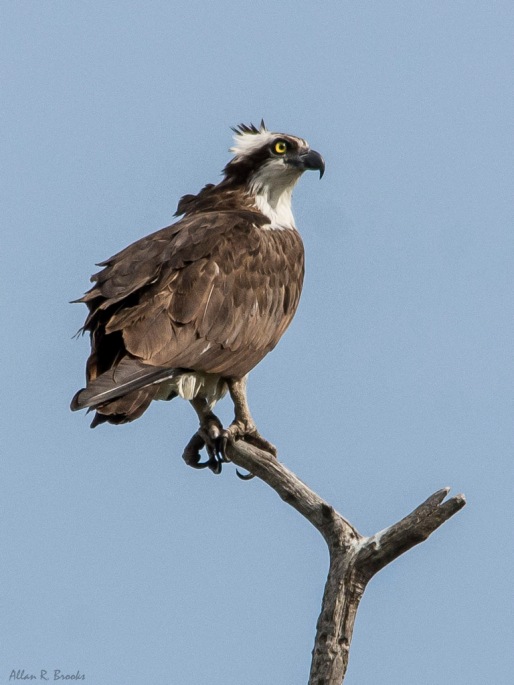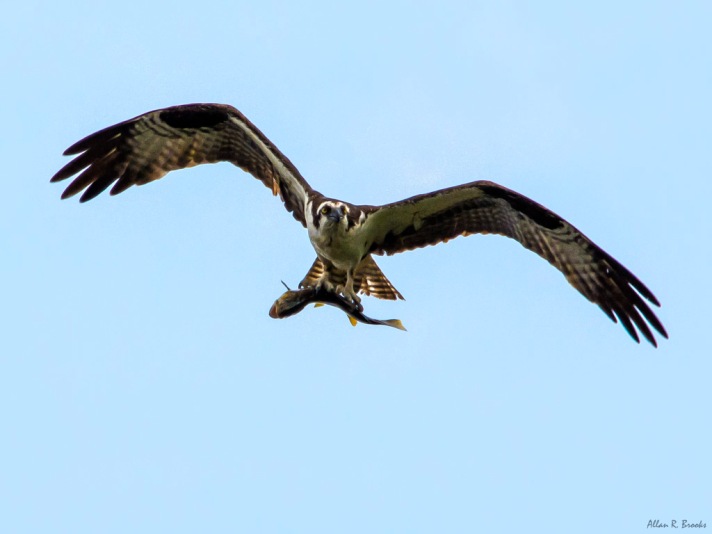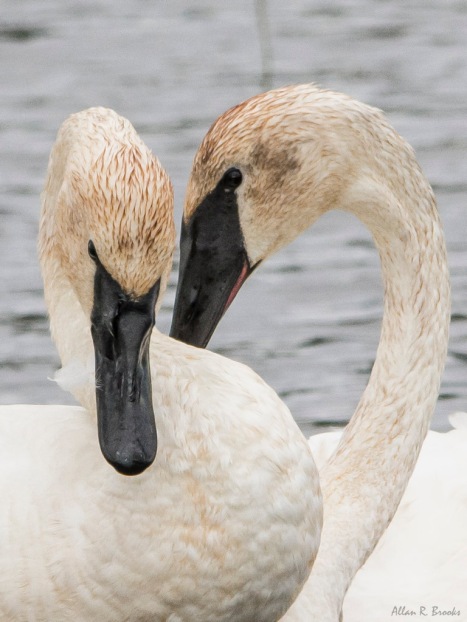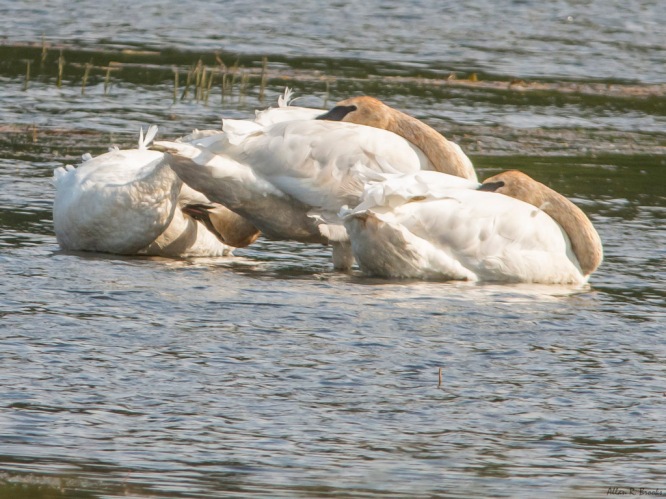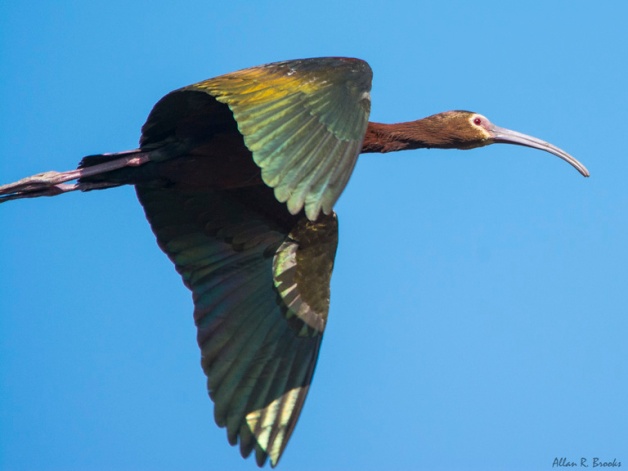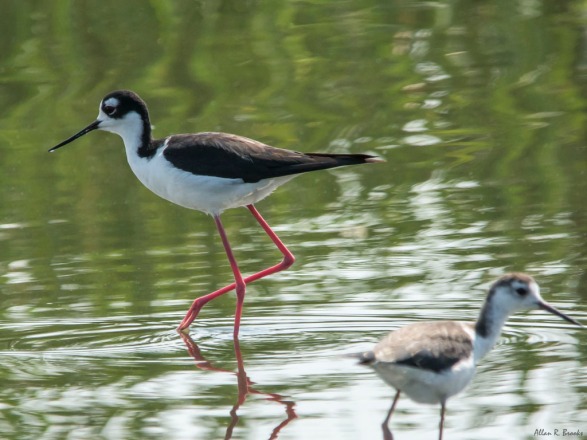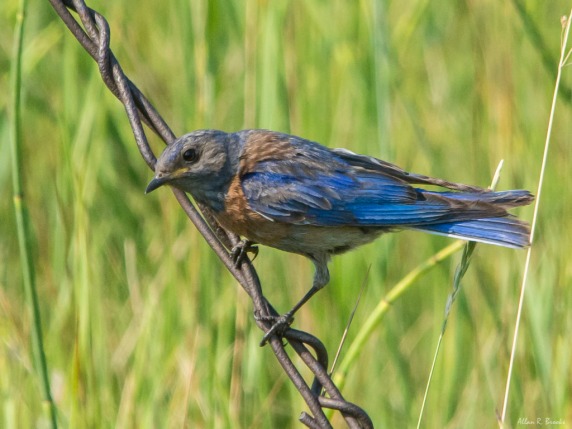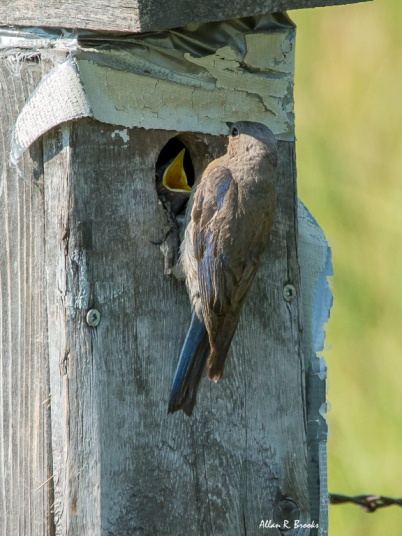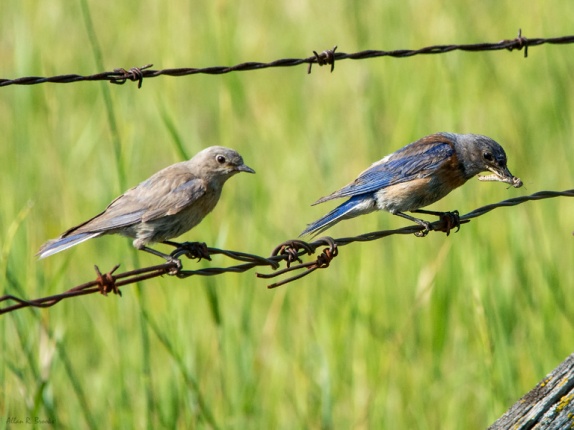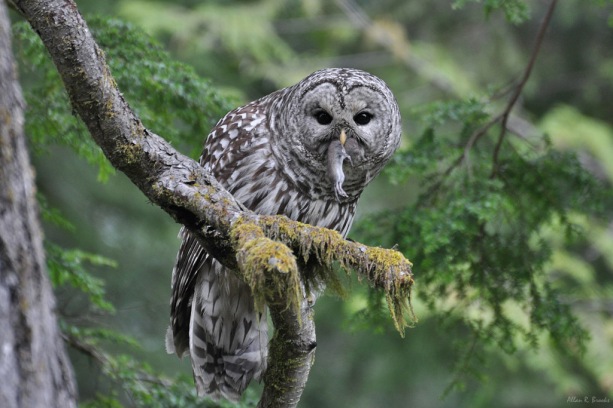
This photo of a Barred Owl was taken just south of Tofino on Vancouver Island a few years ago. Kathleen and I were on the road home after a wonderful vacation when out of the corner of my eye I spotted an owl beside the quiet roadway. When I first saw her* she was perched in some small saplings on the west side of the road. I walked back along the east side and got a few photos from about 50 feet away before she left her perch and swooped across the road, landing behind me, a bit closer now. A few more photos … Then she launched from her new perch and headed straight toward me. She spread her wings suddenly and dropped to the ground just in front of me, out of sight behind some low shrubs. There was a bit of scuffling around on the ground before she flew back up to a tree branch. This was the next picture I got.
It is not current and it is not from southwestern Alberta. Although other birders have seen them in Hillcrest and one night last fall I heard a Barred Owl’s distinctive “Who cooks for you?” call from my Hillcrest backyard.
Its a great shot. I consider it my best photograph and my favourite. That sounds like an excess of hubris but it isn’t really. I did take the photograph but I can’t take much credit for it. Ok, I was smart enough to be driving through the old growth forest on the west coast of Vancouver Island with my camera ready to go in the back seat. I was skilled enough to have my camera set appropriately for the conditions. And I was disciplined enough to move slowly, not spook the owl, and hold steady while I took the shot. Being generous I might give myself 5% of the credit for each of those for a total of 15%. Then there is that ever-present factor I have written about before – luck.
What are the chances that the Owl, the unfortunate mouse (actually a Red Backed Vole, I think) and I, would be at that spot during the few seconds that the opportunity lasted? … and that, as I drove by, I would glance right at that point rather than left? … and that this owl would have the courage to continue its hunt with me standing 50 feet away? OK so serendipity gets … say 35%.
That leaves 50% for the Owl. I am convinced that somewhere in the woods behind her is a modelling school for owls. That’s where she learned to pick that particular perch to land on; to pose so elegantly and perfectly (I defy anyone to find a flaw in her pose or demeanour). And then there is the look in her eyes. Amazingly, I don’t see fear or hostility there. Confidence, curiosity… and something else… maybe pity … yes, pity.
She belongs here. I don’t. She has a mouse. I don’t. Poor me.
* I have referred to the owl as female in this article but that is somewhat arbitrary decision on my part (although the females tend to be larger and this owl seemed quite large to me so maybe it was a good call)
About Barred Owl
About Tofino

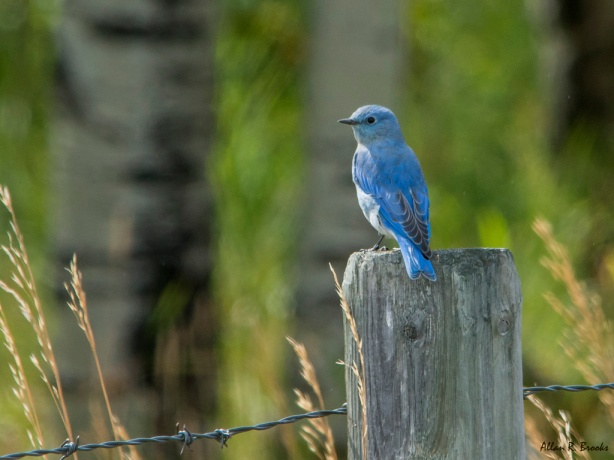
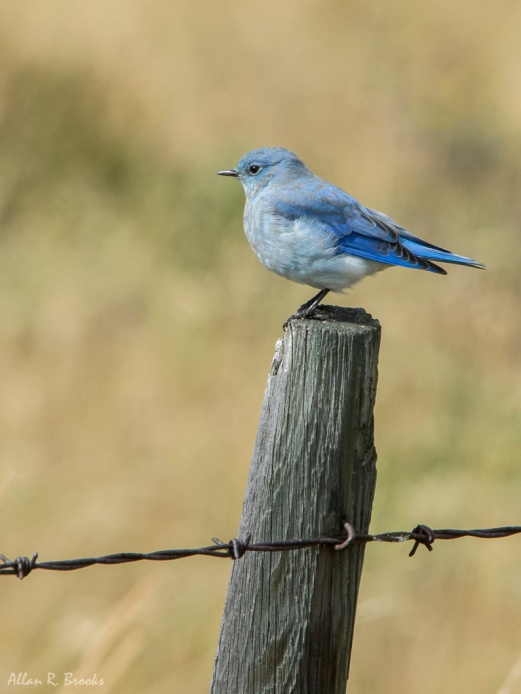

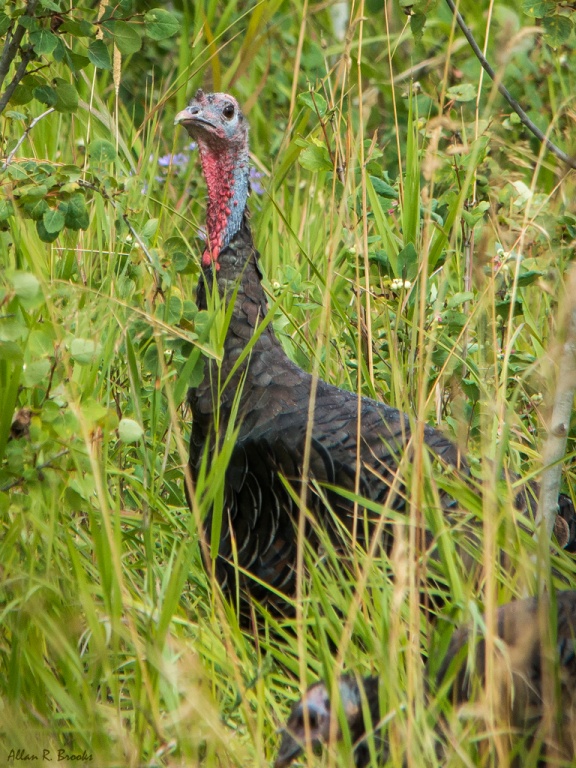
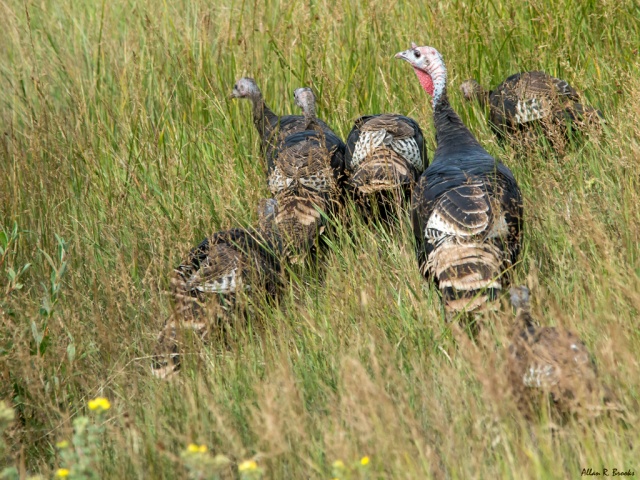
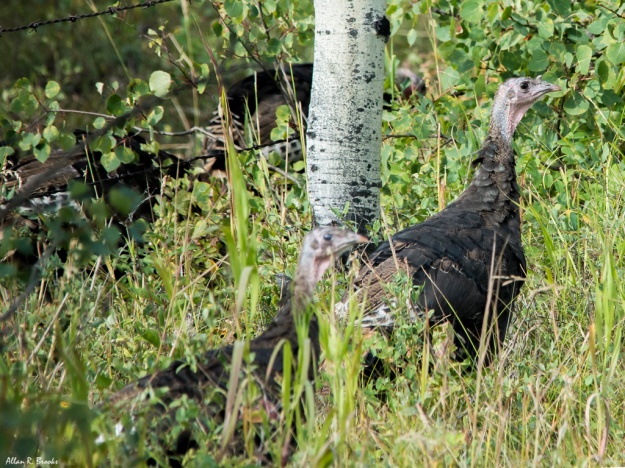 As this group disappeared into the forest their tactic became suddenly apparent. Their dark, glossy body feathers became just vague forest shadows the moment they passed through the first rows of taller plants. Once into the forest they were only discernible if you already knew they were there. It occurred to me then that I have never spotted Turkeys in the forest. I only see them when they venture out into the open of a roadside or grassy field. I guess they are smarter than they look!
As this group disappeared into the forest their tactic became suddenly apparent. Their dark, glossy body feathers became just vague forest shadows the moment they passed through the first rows of taller plants. Once into the forest they were only discernible if you already knew they were there. It occurred to me then that I have never spotted Turkeys in the forest. I only see them when they venture out into the open of a roadside or grassy field. I guess they are smarter than they look!
